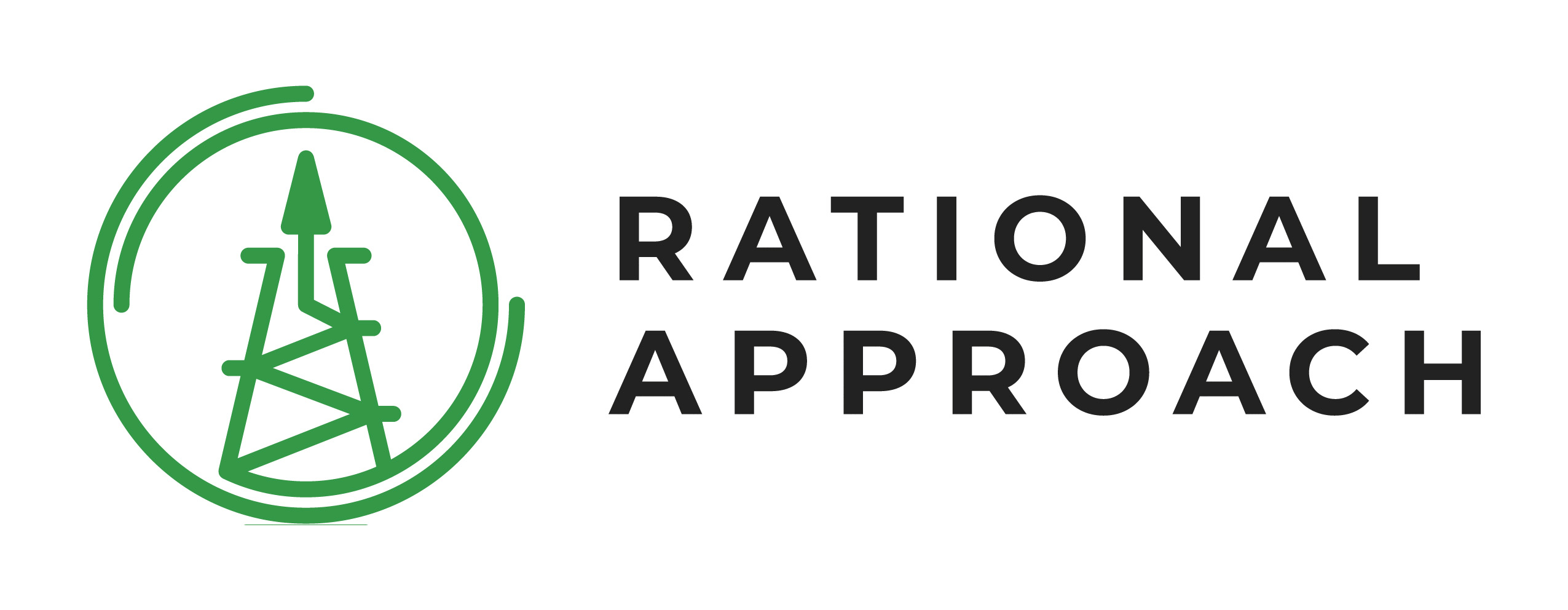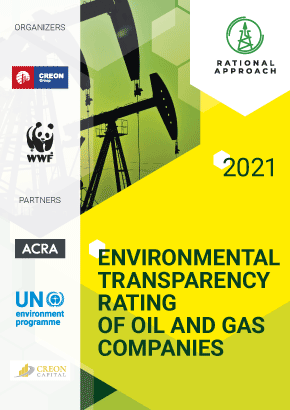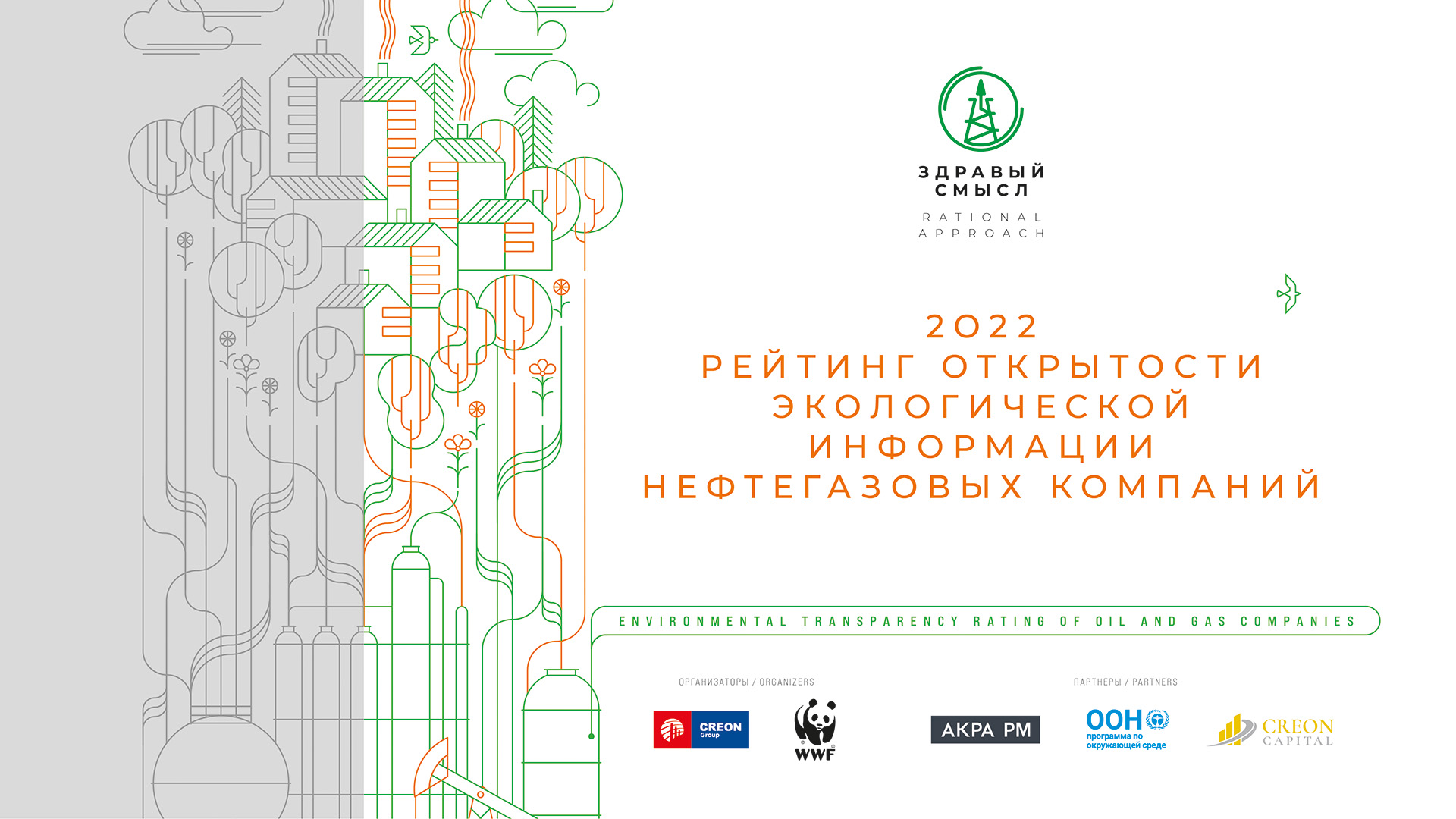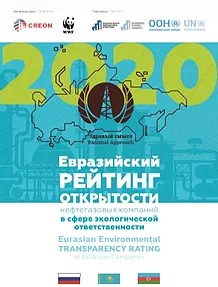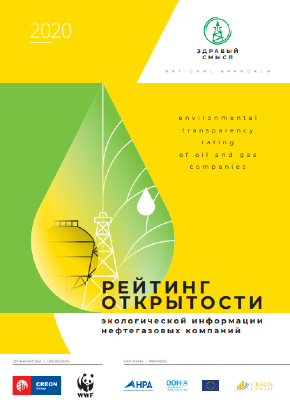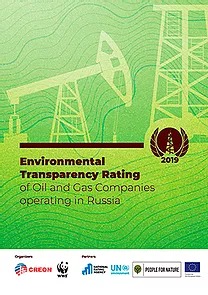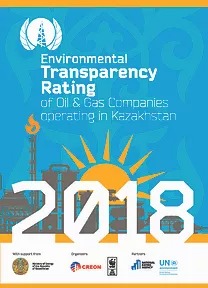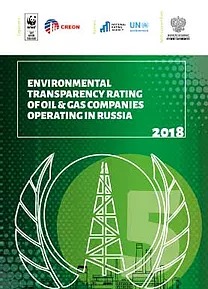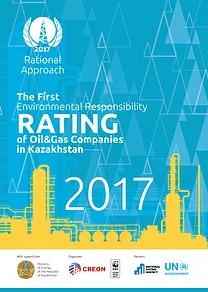WWF Russia, CREON Group and ACRA have presented the results of the annual Environmental Transparency Rating of Oil and Gas Companies in 2021, covering Eurasian region. This year, the top position in the Rating and the second-best score is shared by four leading companies. On average, the level of disclosure of environmental information has decreased, while the rated companies are now clearly divided into transparent and non-transparent. The report is being conducted with the support of the European Union.
The results of the “Environmental Transparency Rating of Oil and Gas Companies”, covering Eurasian region, were presented at the TASS press center on November 30, 2021. The Rating includes 22 oil and gas companies operating in Russia, as well as 14 enterprises operating in Kazakhstan, and two in Azerbaijan.
In 2021, the global sustainable development agenda intensified significantly. In Russia, two key documents have been adopted: the “Taxonomy for Green Financing” developed by VEB.RF and approved by the Ministry of Economic Development, and the “Recommendations of the Central Bank of Russia on Non-Financial Information Disclosure by Public Joint Stock Companies”.
“Adoption of these documents confirms the fact that not only the society but also the investors are now paying more attention to non-financial risks,” said Alexey Knizhnikov, head of the WWF Russia corporate environmental responsibility program. “Ratings contribute to increasing the transparency of the companies and the consistency of environmentally significant information, which helps investors improve the quality of the risk assessment process. Our tool facilitates interaction with all the stakeholders, society being one of the most important,” stated Knizhnikov.
Competition to top the Rating has intensified
In 2021, the competition for top positions in the Rating has turned out to be fiercer than in previous years. The gap between the leading companies has disappeared: first and second places are shared by Zarubezhneft and Tatneft scoring the same number of points; Sakhalin Energy and Surgutneftegaz occupy third and fourth places, also having performed identically well.
“Our assessment of the environmental transparency over many years clearly demonstrates that quite a number of Russian oil and gas companies are maintaining a high level of disclosure. This confirms their thorough preparation for the decarbonization of the Eurasian economy, which can only become possible with participation of the Russian oil and gas sector,” stated the co-founder of the Rating Dr. Fares Kilzie, CREON Group Board Chairman. “It is the oil and gas companies that have the entire infrastructure in place to process and deliver energy products necessary for a smooth and well-considered transition to a renewable energy system. Therefore we shall intensify the dialogue with the oil and gas sector and the regulatory authorities of the European Union and Eurasia, and shall also foster the development of mechanisms for independent monitoring and verification of non-financial reporting. Achieving full environmental transparency in the oil and gas industry in the process of the global energy transition is our main goal,” said the head of CREON Group. At the moment, the Environmental Transparency Rating remains a unique measuring instrument, Dr. Kilzie added.
RUSSIAN OIL AND GAS COMPANIES:
 Tatneft demonstrates the best score improvement, moving up five positions from 6th to 1-2 places. Both Salym Petroleum Development (5th place) and Gazprom (6th place) move two positions up.
Tatneft demonstrates the best score improvement, moving up five positions from 6th to 1-2 places. Both Salym Petroleum Development (5th place) and Gazprom (6th place) move two positions up.
As for the worst performance, Exxon Neftegas have a dramatic 9-position drop, from 5th to 14th place. Lukoil drops out of the top-three and occupies 8th place. Exxon Neftegas has failed to disclose the data on time; Lukoil has not published the data required for calculation of two indicators related to waste disposal and utilization. As a result, the company’s quantitative indicators worsened. The Rating organisers have also applied penalties based on two criteria of part III (“Information disclosure”) due to the notorious emergency spill by LLC Lukoil-Komi on Kolva river.
Russian oil and gas companies need to focus on green financing
Fares Kilzie, Chairman of the Board of Directors of Creon Group, notes that oil and gas companies themselves are among the most important assets of Eurasian countries, Russia in particular. “Pension funds, social benefits, healthcare, – everything related to the well-being of people is linked to the earnings of these companies. Regardless of their position in this Rating, companies demonstrate a very good trend towards balanced and well-calculated carbon neutrality,” Dr. Kilzie said.
However, the time has come for the Eurasian oil and gas business to focus on attracting sustainable investment in their projects. According to Dr. Kilzie, “oil and gas companies will become the main suppliers of new ‘green’ products that will gradually replace fossil fuels with cleaner alternatives such as hydrogen and biofuels. It is the oil and gas industry that possesses the entire infrastructure necessary for a successful energy transition, and I believe there is a large potential in such transformation”.
Meanwhile, the key role in the transformation of the industry will belong to green bonds. “Redirecting investment into green projects has already begun. Even some OPEC members have lined up for green investment to transform their economies. The results of our Rating prove that Russian oil and gas companies should pay close attention to the ‘green development’, which is progressing so rapidly in the West”, Dr. Kilzie said.
According to Amundi, the largest green bond fund, $ 300 billion in green bonds were issued in 2020, and $ 400 billion in 2021. “In 2022, the volume will double,” as forecasted by the head of Creon Group. “Russian companies must participate in this process. There is a feeling that they do not yet understand the mechanisms of working with green bonds. But I hope that in the course of our activities and our discussion with the European Commission, we will be able to find a formula to set up a working group that could propose participation in Russian projects to the Western financial institutions”, Dr. Kilzie emphasized.
OIL AND GAS COMPANIES IN KAZAKHSTAN
KazMunayGas (1st place), Karachaganak Petroleum Operating (2nd place), and North Caspian Operating Company (3rd place) formed the TOP-3 oil and gas companies in Kazakhstan. The Rating of Azerbaijan companies includes BP (1st place) and SOCAR (2nd place).

OIL AND GAS COMPANIES IN AZERBAIJAN:
 “The ACRA Group of Companies actively promotes the principles of responsible investment and sustainable development initiatives on an ongoing basis. We conduct conferences, seminars and trainings, and also work closely with regulators, profile partner companies and professionals in the field of environmental protection and carbon management. For oil and gas companies, participation in the Rating is a positive reputation component and an excellent opportunity to declare themselves as a responsible subsoil user. It is a great honor for us to become a partner of this project and to help increase the transparency of the oil and gas industry as the most difficult one in terms of negative impact on the environment,” commented Alexey Mukhin, CEO of ACRA Risk Management.
“The ACRA Group of Companies actively promotes the principles of responsible investment and sustainable development initiatives on an ongoing basis. We conduct conferences, seminars and trainings, and also work closely with regulators, profile partner companies and professionals in the field of environmental protection and carbon management. For oil and gas companies, participation in the Rating is a positive reputation component and an excellent opportunity to declare themselves as a responsible subsoil user. It is a great honor for us to become a partner of this project and to help increase the transparency of the oil and gas industry as the most difficult one in terms of negative impact on the environment,” commented Alexey Mukhin, CEO of ACRA Risk Management.
Average score decreases; transparent and non-transparent companies
In 2021, the Rating experts presented analytical conclusions, and also a research on the overall dynamics of the Rating over 8 years of its existence (2013–2020). Despite the intensified competition for the top places in the Rating, the average final score of Russian oil and gas companies at the end of 2020 has decreased, indicating an overall decrease in their environmental transparency. Oil and gas companies in Kazakhstan (Rating first calculated in 2016) and Azerbaijan (first Rating in 2018) also showed the downward trend in transparency.
At the same time, the industry average score for disclosure among Russian companies is higher than the score among companies in Kazakhstan and Azerbaijan. This is primarily due to the fact that the Russian companies provide feedback more promptly, disclose additional information more willingly, and provide more detailed and high-quality non-financial reports:

In addition, the 8-year analysis of the final scores of companies in Russia and Kazakhstan has revealed two stable clusters: transparent and non-transparent. The transparent cluster includes the top half of the rating where the active companies compete for the top places in the final standing; meanwhile the non-transparent cluster relates to the bottom of the rating where the more passive companies still fail to adequately disclose environmentally significant information. It should be noted that there are almost no transitions being made from the non-transparent cluster to the transparent one.
Government bodies regulating environment protection, responsible investors and insurance companies, as well as environmental organizations should pay special attention to the increased environmental risks of the “non-transparent” cluster, emphasised Alexey Knizhnikov.
| Year | 2013 | 2014 | 2015 | 2016 | 2017 | 2018 | 2019 | 2020 |
| Companies in transparent cluster | 12 | 14 | 13 | 12 | 14 | 14 | 13 | 12 |
| Companies in non-transparent cluster | 7 | 7 | 8 | 10 | 8 | 6 | 5 | 10 |
| Total number of companies in both clusters | 19 | 21 | 21 | 22 | 22 | 20 | 18 | 22 |
“We have analyzed the trends for every year of our Rating so thoroughly for the first time, and plan to propose a number of rating methodology changes to adapt it to the increasing environmental demands in the coming year,” announced Alexey Knizhnikov.
About the project
The Rational Approach Project featuring the independent Environmental Transparency Rating of Oil & Gas Companies was initiated by the CREON Group and WWF Russia in 2014. ACRA RM Rating Agency is the partner of the Rating. The project is implemented with the support of UNEP, and is supported by the EU’s People for Nature project and the Ministry of Energy of Russia.
